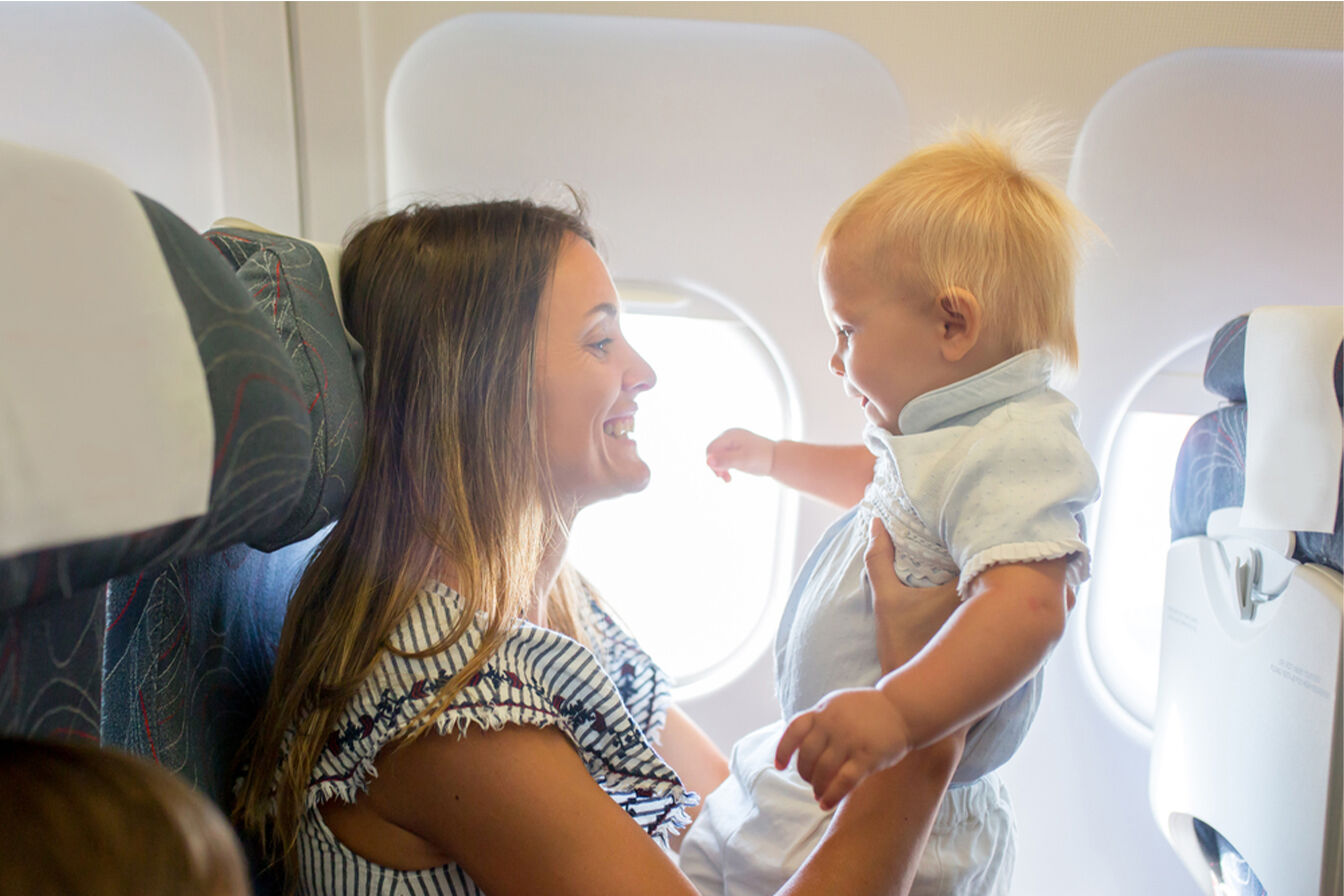Flying with a baby: Essential tips for a safe trip
Flying with a baby can bring unique challenges, but with enough preparation, you'll be able to navigate the journey with confidence and ease. Below, you'll find practical tips to make the experience smoother, from packing essentials to handling long-haul flights. Let's dive in.

Tips for flying with a baby
Check with your pediatrician
Firstly, check with your pediatrician if you can fly with your baby. This is particularly crucial if your child is a newborn, was born prematurely, has recently had an ear infection or ear surgery, or has heart or lung issues.
Pack a play yard
Consider bringing along a play yard that will serve as a cozy space for your baby to relax and play on the go. Pick a compact model that's quick to set up and pack away, such as the Bugaboo Stardust that can pop up in one second with mattress included. It comes with a handy travel bag to make it easier to transport and protect it from damage, too. Most airlines allow play yards to be checked as part of your luggage, but confirm before you travel.
Pack extra
Traveling with a baby means facing unpredictable situations like delays, cancellations, or extended waits in the airport. You don’t want to be caught unprepared without something your baby needs. Pack extra formula, snacks, diapers, and other essentials. Always bring more than you think you’ll need, but don't overpack.
Include a few paper bags as well; they’re useful for storing any unexpected spills or accidents during the trip. Pack a change of clothes for yourself in your carry-on, as anything your baby spills might end up on you.
Choose your seat carefully
If you can choose your seat, aim for one near the front. This makes it easier to get off quickly once you land. Whether you choose an aisle seat or a window seat is up to you. An aisle seat means it'll be easier to move around, but if you’re using a car seat for your baby, the airline may require you to sit by the window.
Arrive with time to spare
Traveling with a baby means check-in and security will take longer than when you’re flying solo. Arrive at the airport early to allow extra time for unexpected delays like diaper changes or long lines.
Board first or last
If you’re flying with other adults, let them board first with your carry-on items while you and your baby wait to board last. This keeps your baby entertained in the airport instead of in the confined space of the plane. However, if you’re traveling alone, boarding early might be a better option, so you'll have extra time to settle in without feeling rushed.
Bring your car seat
Many parents of babies under two opt to have their baby ride on their lap during flights. However, the safest way for them to fly is to let them sit in their own car seat, according to the American Academy of Pediatrics (AAP) and the Federal Aviation Administration (FAA). An infant car seat, like the Bugaboo Turtle Air Shield by Nuna, can be brought on board and installed rear-facing in the airplane seat. Make sure to check with your airline, as policies may vary.
The Bugaboo Turtle Air Shield is also lightweight and pairs seamlessly with your Bugaboo stroller, creating a travel system that helps you travel hassle-free after you land.
Ask for a bassinet
For cross-country or international flights, choose an airline that offers bassinets. Availability can differ by airline, aircraft, and seat assignments, so request one when booking your ticket and confirm a few days before your flight. Don't forget to check the airline bassinet's weight and size restrictions in advance.
Dress in layers
Since you'll be on the move one moment and sitting in a cold cabin the next, dress both you and your baby in layers. This way, you can easily adjust as needed. Choose clothes for your baby that allow easy access for diaper changes. The simpler it is to change their diaper, the smoother your trip will be.
Bring your stroller
A stroller can make it easier to get around the airport with your baby. If you’re traveling with both a stroller and a car seat, check with your airline to see if you can gate-check both or just one. If you do gate-check, make sure you know where to pick them up after the flight.
A compact travel stroller like the Bugaboo Butterfly can fit in the overhead compartment, so you won’t need to gate-check it. Depending on the airline, it may not count as luggage, but it’s best to confirm with your airline before you fly.
To protect your stroller from dirt and damage, consider using a transport bag. You can carry it by the handle or wear it as a backpack, keeping your hands free for other tasks.
Feed your baby during take-off
If you have a newborn, feeding them or giving them a pacifier during take-off and landing can help with air pressure and protect their ears. Don’t hesitate to ask the flight attendants to heat your baby’s formula if needed. For older babies, snack time can be a good distraction and keep them entertained.
Bring new activities
For older babies and toddlers, along with their favorite toys, bring some new activities to keep them engaged. Purchase travel-friendly board games or puzzles, and introduce them one by one throughout the flight. You can even wrap them like gifts to make things more interesting.
Ready for take-off
Flying with a baby can feel daunting, but with some planning, you can enjoy a smooth, stress-free trip. Check with your pediatrician, pack wisely, and plan your seat and boarding strategy. By keeping your baby comfortable and entertained, you'll set yourself up for a great journey and create lasting memories together.